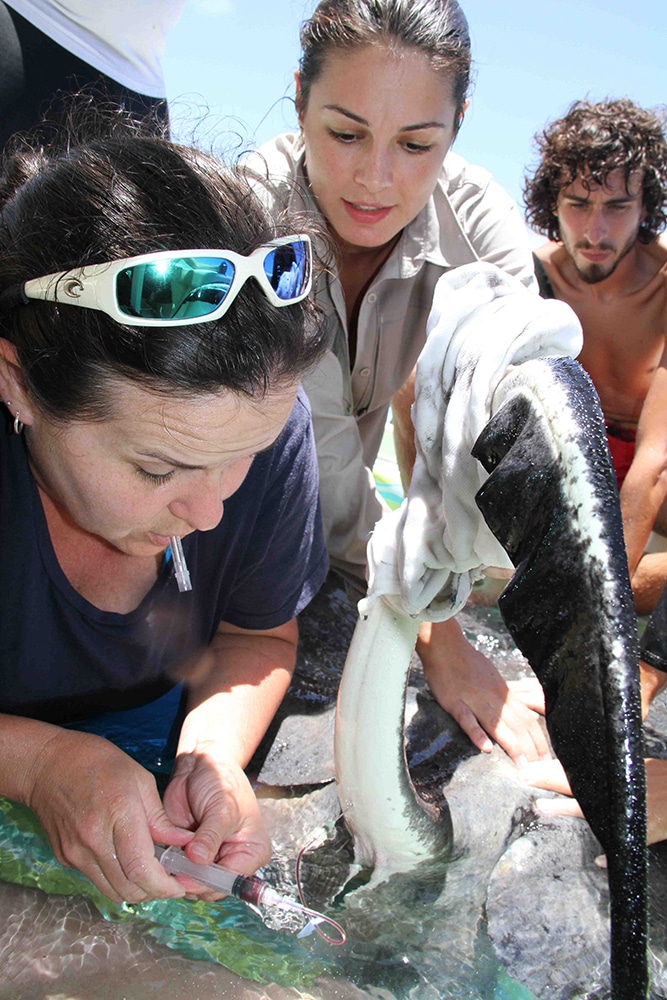
2013 Stingray Census
The Guy Harvey Research Institute and Georgia Aquarium recently completed a 2013 census of the North Sound stingray population in the Cayman Islands. According to Guy Harvey, the results were positive.
That’s good news because the economic health of the Cayman Islands relies heavily on stingray tourism.
“This animal has appeared in every single media advertisement and tourist guide about the Cayman Islands for the last 30 years,” said biologist and marine artist Guy Harvey. “It’s now on the new $50 note.”
The 2013 census ran for five days and was conducted by three vets from the Georgia Aquarium, Dr. Mahmood Shivji, the director of the Guy Harvey Research Institute, and Dr. Brad Wetherbee, a specialist from the University of Rhode Island. That’s not including all of Cayman Islands’ Department of Environment staff who helped too.
In all, 75 rays were sampled at the Sandbar, a popular tourist attraction on Grand Cayman. That’s up from 57 stingrays in July 2012. Besides the usual DNA and blood samples, the vets used an ultrasound computer to detect pregnancy in rays. About 20 percent of the females sampled were pregnant.
“The site needs new animals to replace those that leave, or are eaten by natural predators,” explained Harvey.
The vets recommended that squid fed to the rays is not the best food nutritionally. There needs to be more fish added to their diet.
“An inexpensive way of to get fish is to collect cuttings and scraps from restaurants,” said Harvey. “In addition, lionfish carcasses — spines removed — are slurped by the bigger rays.”
Stingrays weren’t protected on the islands until this year.
“For years, we tried the route of self-regulation,” said Charles Clifford, Cayman Islands’ Minister of Environment. “It became abundantly clear that in the absence of legislation there was little that could be done to properly regulate activities at these locations.”
In March 2013, new regulations designated the popular Sandbar and Stingray City tourist attractions as Wildlife Interaction Zones. The new regulations guard the rays by controlling the way people interact with them, protecting the reefs and natural environment in and around the designated zones, and licensing the tourist boats that enter these areas.
“My conservative estimates assume 400,000 people visit the Sandbar each year,” said Harvey. “Paying $40 per head, that puts the value of each ray at $500,000 per year. They are slow growing, long-lived animals and so in 20 years they can generate the country between $10,000,000 to $15,000,000 each.”
Stingrays are not endangered, but because of their celebrity status they earned protection. The handling of rays by tour operators has improved lately because of guidelines drawn up by the Department of Environment. Tour operators can no longer lift stingrays out of the water for moves like the “Stingray Sombrero.”








